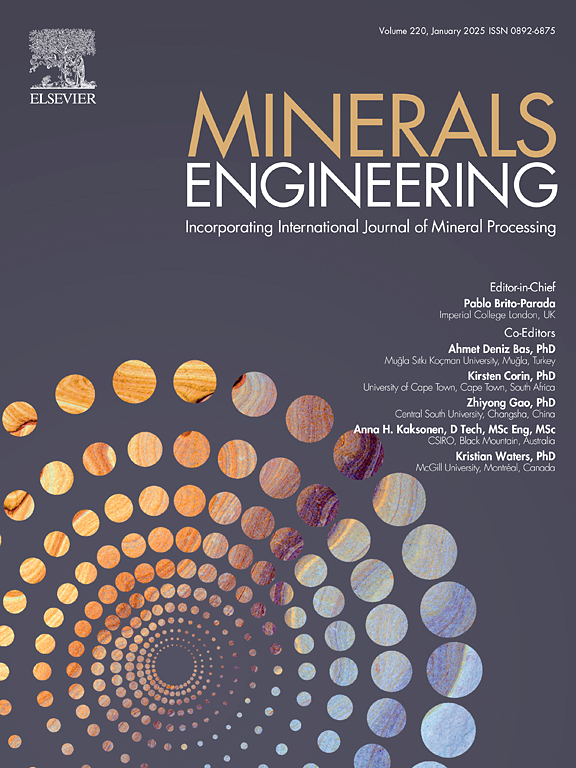通过再利用战略制定评估循环经济的可靠指标:利用水处理污泥作为铁矿尾矿浆脱水的凝结剂的案例研究
IF 5
2区 工程技术
Q1 ENGINEERING, CHEMICAL
引用次数: 0
摘要
由于缺乏足够简单的工具来评估循环经济(CE)概念下的再利用战略,本文受以前开发的指数(即循环经济指数(CEI)和基于价值的资源效率(VRE))的启发,引入了再利用效率指数(REI)作为新的指标。作为衡量再利用战略经济效益的指标,REI 是再利用报废(EOL)产品而不是使用新产品所获得的净价值与再生产该报废产品所需的材料和能源投入价值之比。要计算任何特定报废产品的 REI,有关质量、物理化学特性和能源消耗操作数据的信息至关重要,这些信息主要可从公司的财务档案中获得,而且还必须预测报废产品的市场价格。在另一部分研究中,通过 REI 对以氯化铁为基础的水处理污泥(FCS)作为混凝剂,而不是使用高成本的聚合物混凝剂进行铁矿石尾矿浆脱水的再利用进行了评估。结果表明,根据能源和材料的市场价格以及 FCS 中的铁(FeCl3)含量,REI 可在 0.51 至 1.04 之间变化,相当于 51-104% 的附加值。总之,REI 基于可获取的信息,其简单易懂的特点使其适用于管理者和政策制定者投资和创造技术,以通过再利用行动实现 CE 概念中的闭环循环。本文章由计算机程序翻译,如有差异,请以英文原文为准。

Developing a robust indicator to evaluate circular economy through reuse strategy: A case study of using water treatment sludge as a coagulant for dewatering of iron ore tailings slurry
Due to the lack of tools, which are simple enough to assess the reuse strategy in the concept of circular economy (CE), in the present paper, reuse efficiency index (REI) was introduced as a new indicator, inspired by previously developed indexes, namely circular economy index (CEI) and value-based resource efficiency (VRE). The REI, as a measure of economic efficiency of reuse strategy, is the ratio of the net value obtained from the reuse of end of life (EOL) product instead of using a new product over the value of materials and energy inputs required to reproduce the EOL product. To calculate REI for any specific EOL product, information regarding mass, physicochemical properties and operational data on the consumption of energy, which are mainly available in the financial archives of companies, is crucial and the market price of EOL product must also be predicted. In another part of the study, the reuse of ferric chloride-based water treatment sludge (FCS) as a coagulant, instead of using high cost polymeric coagulant, for iron ore tailings slurry dewatering was evaluated through REI. The results showed that depending on the market prices of energy and materials as well as the iron (FeCl3) content in the FCS, the REI could vary between 0.51 and 1.04, corresponding to 51–104% added value. Overall, REI is based on accessible information and its simplicity and comprehensibility makes it applicable for managers and policymakers to invest and create technologies for reaching closed-loop cycles in the concept of CE through reuse action.
求助全文
通过发布文献求助,成功后即可免费获取论文全文。
去求助
来源期刊

Minerals Engineering
工程技术-工程:化工
CiteScore
8.70
自引率
18.80%
发文量
519
审稿时长
81 days
期刊介绍:
The purpose of the journal is to provide for the rapid publication of topical papers featuring the latest developments in the allied fields of mineral processing and extractive metallurgy. Its wide ranging coverage of research and practical (operating) topics includes physical separation methods, such as comminution, flotation concentration and dewatering, chemical methods such as bio-, hydro-, and electro-metallurgy, analytical techniques, process control, simulation and instrumentation, and mineralogical aspects of processing. Environmental issues, particularly those pertaining to sustainable development, will also be strongly covered.
 求助内容:
求助内容: 应助结果提醒方式:
应助结果提醒方式:


